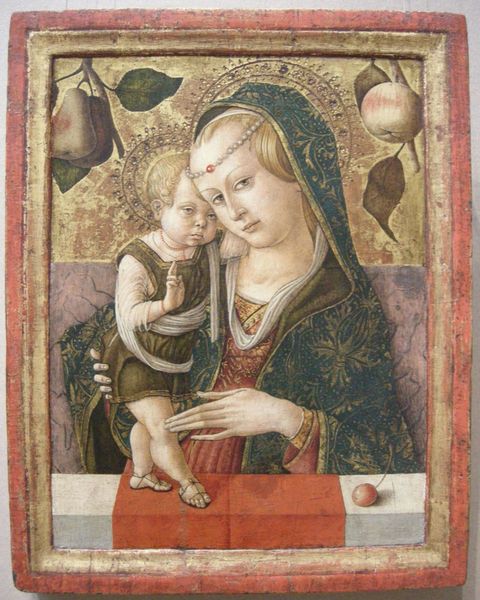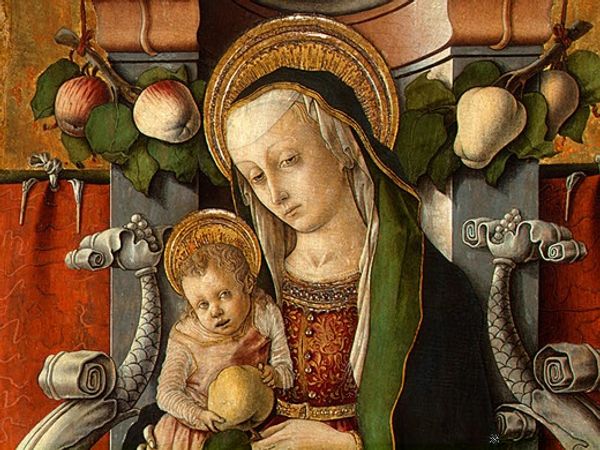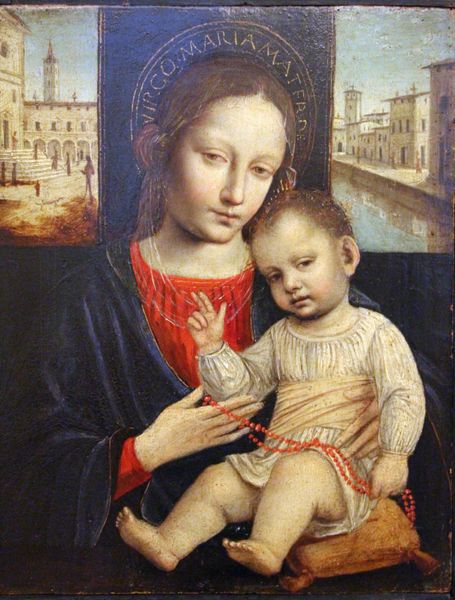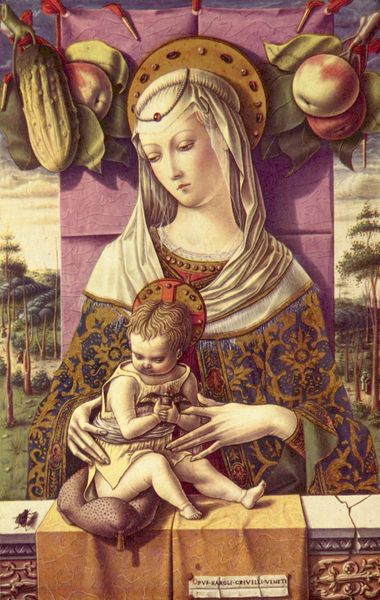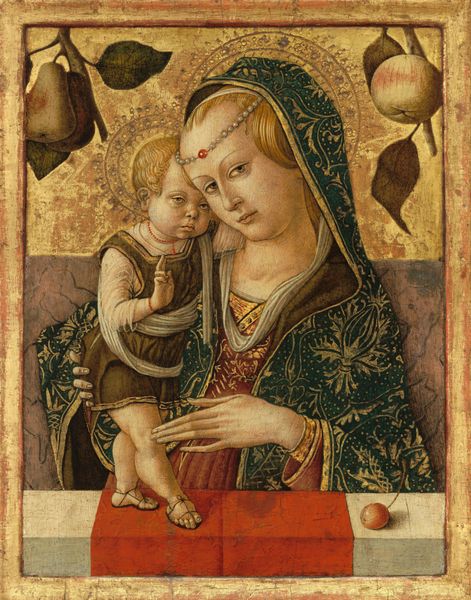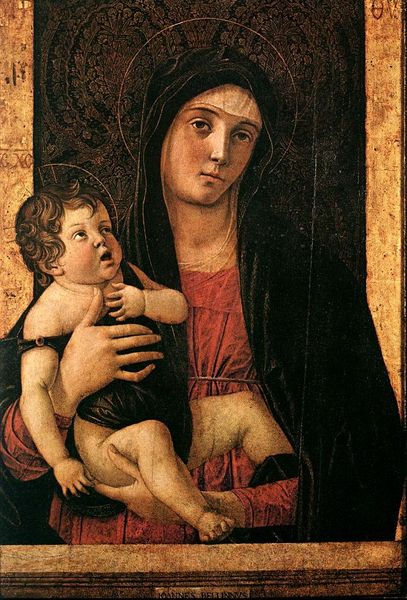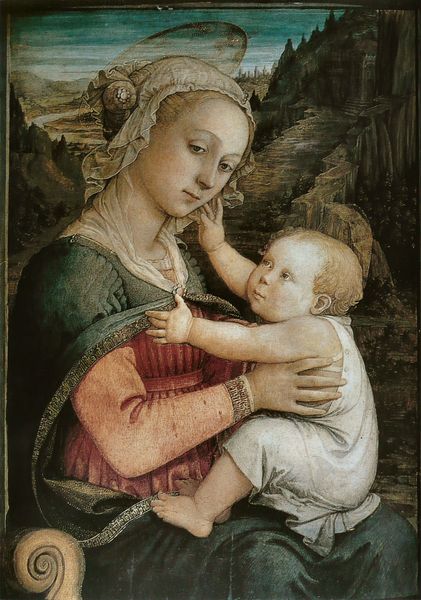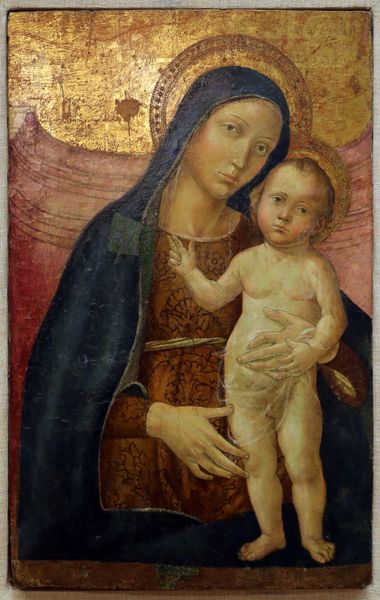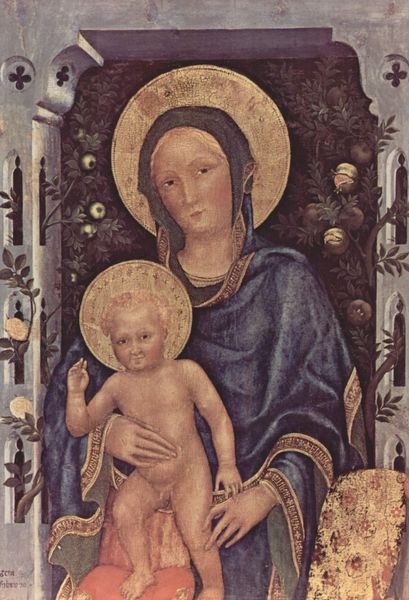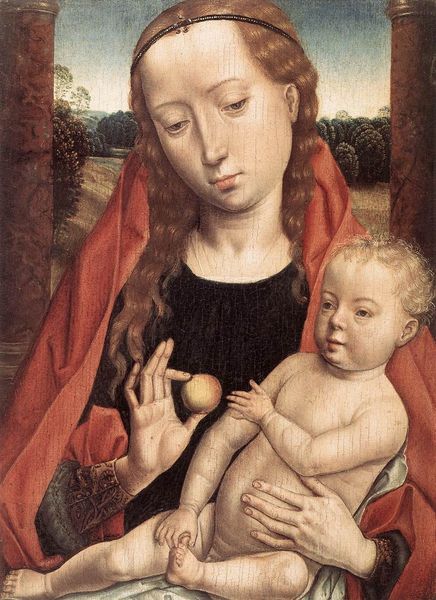
tempera, painting
#
portrait
#
tempera
#
painting
#
figuration
#
madonna
#
oil painting
#
child
#
underpainting
#
christianity
#
facial portrait
#
italian-renaissance
#
portrait art
#
christ
Copyright: Public domain
Editor: Here we have a detail from Carlo Crivelli's "Madonna Enthroned with Donor," created around 1470. It's a tempera painting. What strikes me immediately is the Madonna’s melancholy expression despite the rich colors and detailed textures. How do you interpret this work, focusing on its visual elements? Curator: Precisely. The composition is rather unique. Note the artist's attention to linear perspective, directing our eye to key points, and also to decorative details, such as the embossed ornamentation on the Madonna's dress. What’s crucial here is how the Madonna is formally presented - there's an attempt at idealization with very sharp lines in her face, while Christ looks almost like a miniature grown-up. Does this compositional strategy strike you as perhaps intentionally jarring? Editor: I hadn't thought of it that way. It's more idealized, I suppose, than realistic. There’s something almost geometric in the rendering of the Madonna’s face, whereas the child, even with its exaggerated features, seems somehow more lifelike. Curator: Consider the materiality. Tempera offers Crivelli the capacity for precisely defined forms and a bright, enamel-like surface. Observe how the flatness of the gold leaf contrasts with the attempt to represent three-dimensional volume. Also the fruit in Christ’s hands. Do you see an analogy? Editor: That's an interesting observation! It all contributes to a sense of formality, of staged representation, almost like a theatrical scene. What do you take away from the presentation? Curator: Exactly. It's about balance – visual elements aligning perfectly for their artistic meaning. From all these observations, one can appreciate the complexity, despite its deceptively straightforward appearance. Editor: It seems much richer when considering its formal construction and its surface. Curator: I agree. By paying close attention to those elements, we gain insight into Crivelli's skill, creativity, and commitment to artistic perfection.
Comments
No comments
Be the first to comment and join the conversation on the ultimate creative platform.

